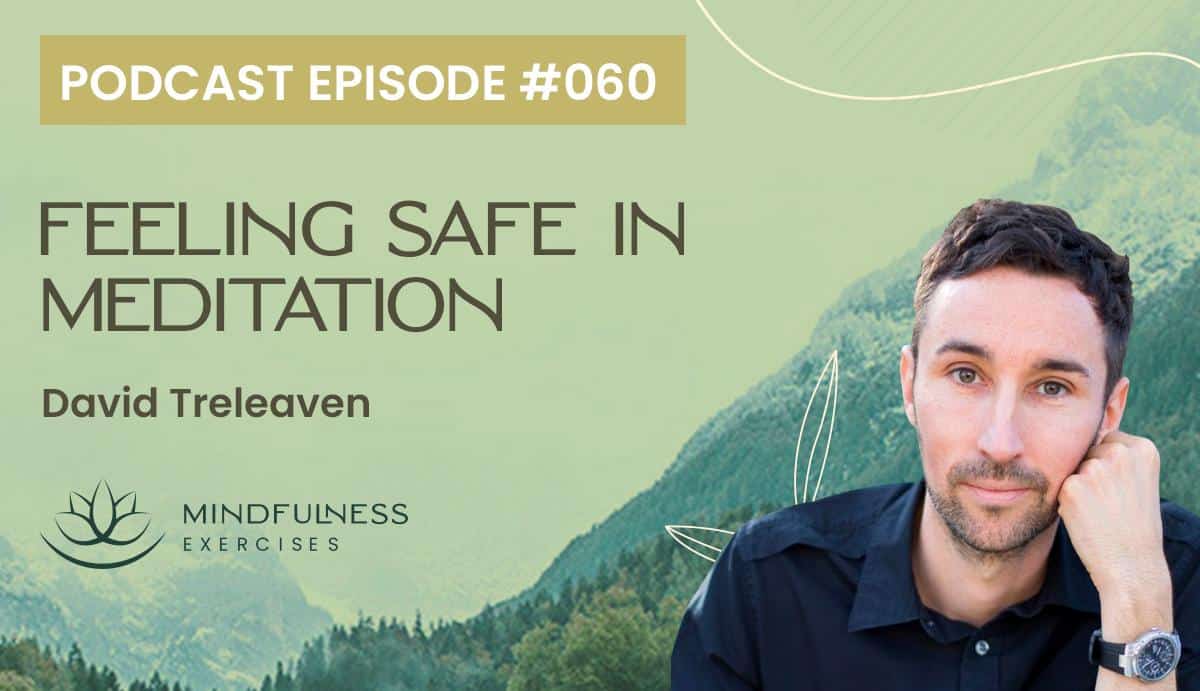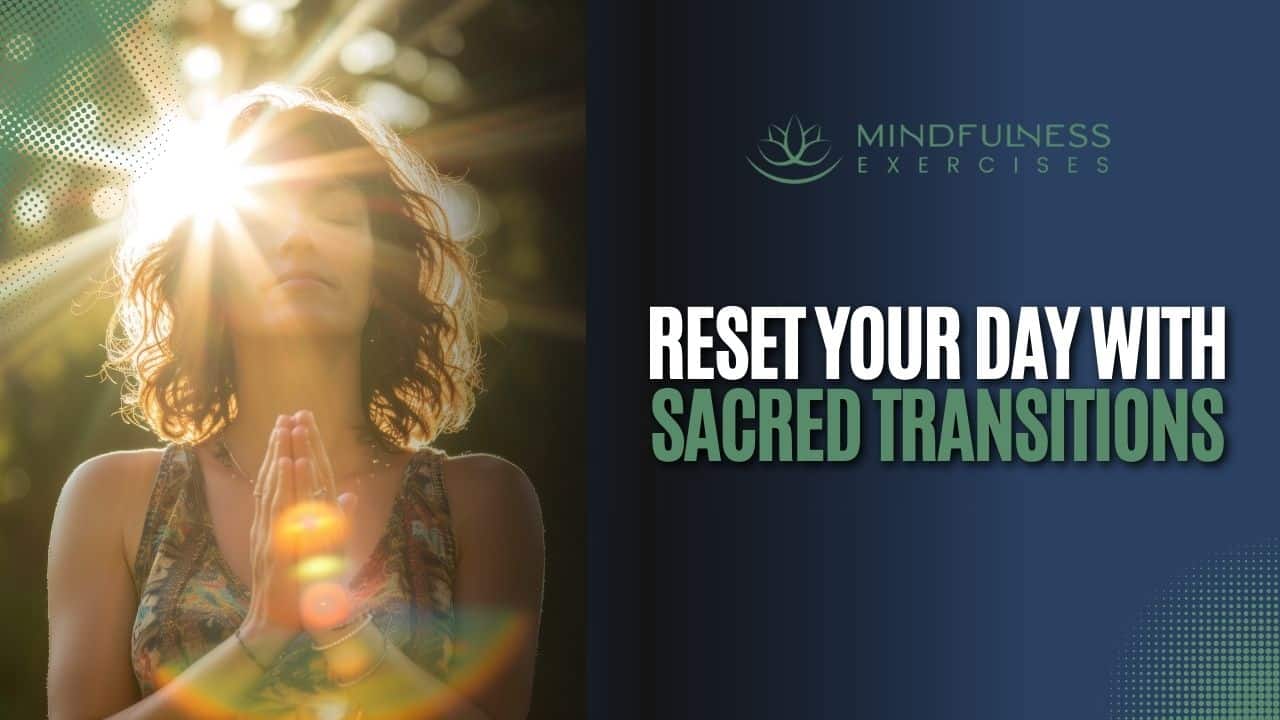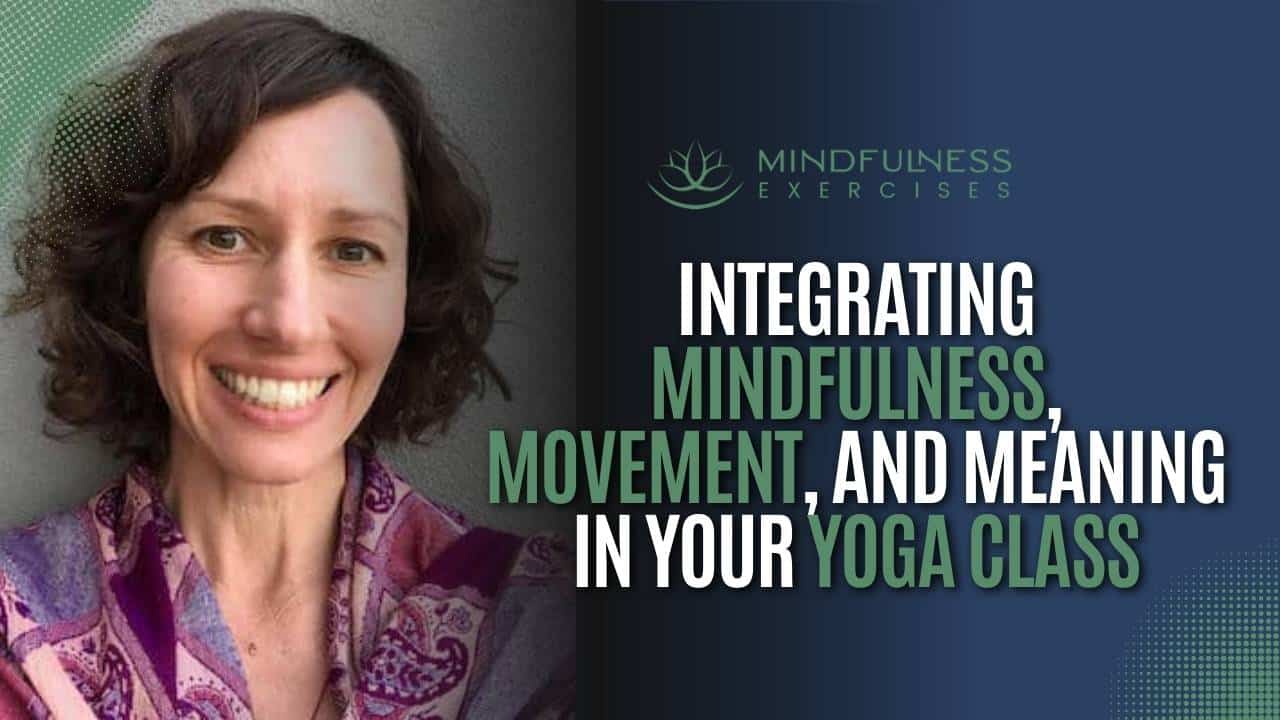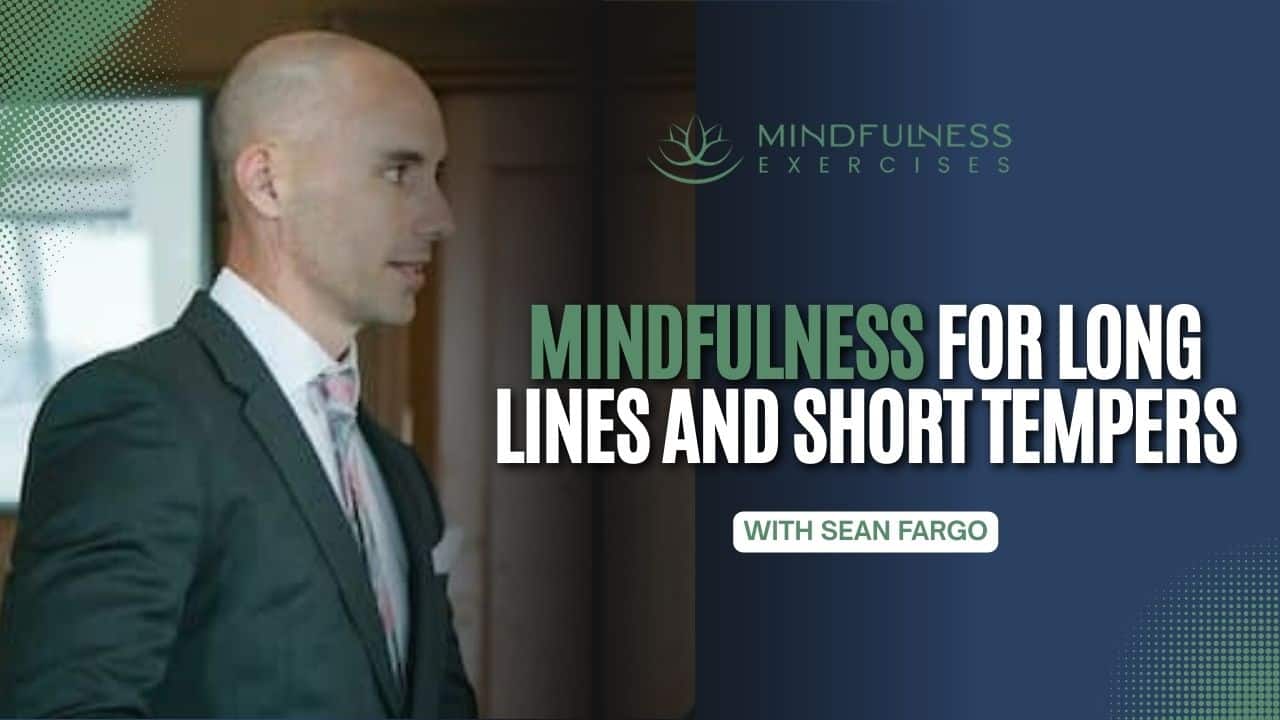Listen now

Meditation can help us heal from trauma, but only if we feel safe while practicing.
By implementing strategies for safety in meditation, we learn to be present with discomfort without becoming overwhelmed. We develop agency over our practice, and in the process, we become empowered to direct our own healing.
In this episode, Sean Fargo speaks with educator, author and trauma-informed meditation expert David Treleaven about the tools that can help us feel safe in meditation and how to best offer them as teachers.
For more insight into the meaning of trauma-sensitive mindfulness, listen to episode #022, Trauma-Sensitive Mindfulness with David Treleaven.
Please note that any conversation about trauma can be evocative. As you listen, remain mindful and self-responsive.
Sponsored by our Mindfulness Meditation Teacher Certification Program
MindfulnessExercises.com/Certify
What You’ll Learn in This Episode:
Show Notes:
Why strategies for safety are vital for meditation practice
Healing begins only once the body feels safe. In meditation, safety strategies are a vital part of skillfully navigating discomfort so that we move toward healing versus re-traumatization. Those who are working with trauma in meditation may already have personal coping mechanisms they naturally turn to. As teachers, acknowledging and respecting those strategies should come first, before we introduce additional tools.
“If someone that you’re working with, or anyone in our groups, if they’re holding on to something that’s working for them, that takes care of them, then to me, the move is to just dignify, really dignify whatever’s taking care of someone, without an agenda. And so trauma’s like that to me. People have these survival strategies and we need to support them and just have this element of curiosity.”
Safety strategies and the metaphor of Medusa
Medusa is a mythical creature known for turning to stone those who look directly at her. Trauma can be similar in that turning directly toward it can trigger a freeze response. What’s more, people who have experienced trauma in the past are more likely to orient themselves to trauma, even during meditation. They are hypervigilant. What’s perhaps needed most, then, is not an invitation to turn toward the trauma, but tools that can help shield us from that direct gaze.
“When I went into my trauma sessions, they didn’t start by asking about trauma, they didn’t say, ‘Tell me all about your trauma.’ Instead, the trauma therapist I saw said, ‘Tell me what’s working in your life.’ [...] And I’ll never forget it, they said, ‘Your capacity to be with what’s working is going to support you to be with what’s hard.’”
Why every mindfulness teacher should have safety tools to share
David suggests that mindfulness teachers, clinicians, coaches and those guiding meditations should have approximately 20-60 tools to share at any moment to help people feel safe during their practice. Among these tools is granting permission to not meditate. Not everyone is ready for meditation, and that’s perfectly ok.
“I got to hear Sharon Salzberg, who some of you may know. Sharon was doing work with survivors of gun violence. [...] And Sharon said the number one term in that setting was ‘tools,’ that people just needed tools. Like, give me whatever you’ve got to work with trauma.”
How frameworks like the ‘window of tolerance’ keep us safe
Framing one’s present-moment sense of safety within a predefined zone or window of tolerance can help empower practitioners and also improves communication between students and teachers. Dan Siegel’s window of tolerance is one method. Identifying the zones of safety, learning and overwhelm is another.
“Safe zone is when you feel safe. You might not be stretched, you kind of know the territory. Learning is when we’re asking you to stretch into a place that you might not feel comfortable, but you’re not yet feeling overwhelmed, which is the third and final circle.”
The nuance behind the invitation to take a break
Teachers will often tell people they can ‘take a break’ as they need to. While well-meaning, this actually provides little instruction and thus isn’t as helpful as intended. Does taking a break mean get up and leave the room, just stop meditating, let the mind wander, or something else? A more skillful instruction may be to teach slowing down versus stopping.
“Help people apply the breaks. And by that I mean to modulate the intensity of their meditation practice. [...] Whenever you’re working with trauma, this is really the first step. You want to make sure people can modulate the intensity of their experience. Do they know how to slow things down if things start to get out of control and feel overwhelming?”
The psychological phenomenon of compliance
Compliance is a well known phenomenon that describes our tendency to give away our power to those in leadership positions because we want to please or be liked by them. As a teacher then, it’s not only important to offer safety strategies, but to continually remind students (even during meditation) that these safety tools are theirs to implement as needed. It’s also good practice to regularly ask students how they feel.
“Given that there’s such a positive word on the street about meditation, people will often just kind of stay quiet and they won’t approach the teacher and say, ‘Hey, I’m having a hard time in practice, can I talk to you about it?’ Unless, there was a prompt. Unless you said, in a gentle way, ‘If at any point you feel overwhelmed, [...] you’re welcome to come and talk to me after the meditation.’ You know, something like that.”
Why we need safety strategies for every style of meditation
David offers several examples of how mindfulness meditation teachers can empower students to slow down their practice when approaching overwhelm. He also reminds us these tools are vital for all types of meditation as there’s no particular practice that is more or less overwhelm-inducing. For example, body scan practices can actually be helpful for those who’ve suffered trauma to their bodies, while on the other hand, a simple breath awareness practice can trigger anxiety.
“The breath, in many traditions, is often the anchor, object of attention, to cultivate mental stability, which, for most people, that will work. However, the breath is not always neutral for someone who’s experiencing trauma. [...] So, if you’re asking someone to pay close attention to the breath, it could be evocative for them. And the point being, it’s just not the most helpful way to cultivate stability.”
Equalizing alternative meditation anchors
Meditation is a practice of turning inward to observe our own body and mind. However, the body and breath are not the only suitable anchors. We can stabilize the mind with the use of external anchors, such as sound, something in our field of vision, or the sensation of a held object. Allowing the choice of anchors is a great way to help someone feel safe, as long as we make it clear no anchor is worse or better than another.
“So, you know, I think when you offer these anchors, try to do it with some tact, to not make it like ‘Well if you can’t do that, then you need to do this.’ It’s whatever works. To me, it’s whatever works.”
Additional Resources:

About David Treleaven
David Treleaven is a writer, educator, and trauma professional originally from Toronto, Canada. His life’s work is training people to lead mindfulness in a trauma-sensitive way. He has made significant contributions to mindfulness teachers around the world by training thousands of people in Trauma-Sensitive Mindfulness (TSM) and his 2018 book with W. W. Norton titled Trauma-Sensitive Mindfulness is required reading for all mindfulness and meditation teachers.
His work has been adopted into multiple mindfulness teacher training programs around the world, including UCLA’s Mindful Awareness Research Center, the Engaged Mindfulness Institute, and Bangor University’s MA in Mindfulness program in the UK. He is currently a visiting scholar at Brown University.



